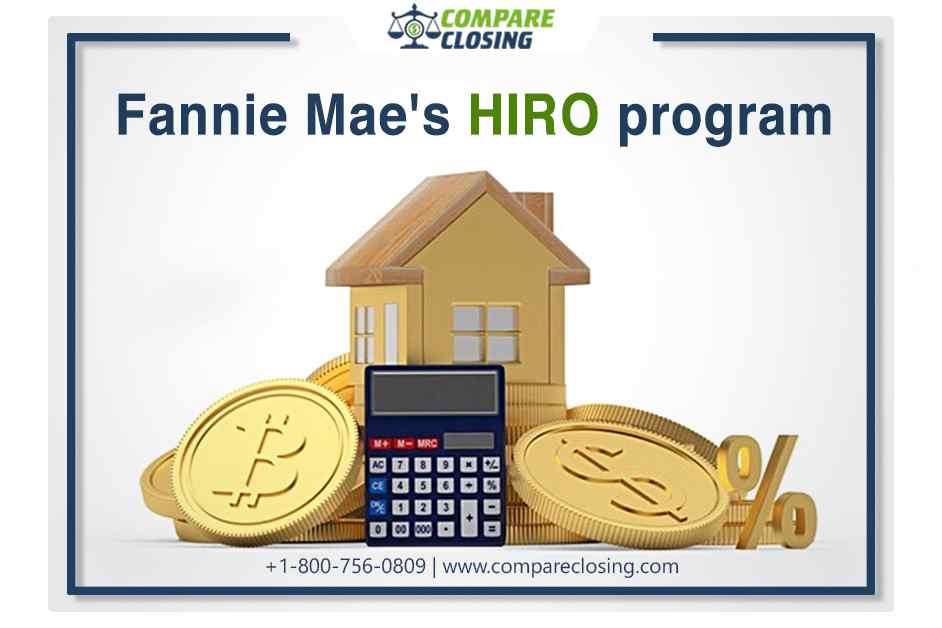Table of Contents
- What Are Netting Escrows & How Does It Work?: The Best Guide - January 2, 2024
- The Secret About Prescriptive Easement: Top Guide 1 Must Know - December 4, 2023
- About Home Equity Loans In Texas And How Can One Obtain It - November 27, 2023
All About HIRO Program
Fannie Mae’s HIRO program was created for borrowers who have not benefitted from rising home values in recent years.
HIRO is meant to lend a hand to homeowners who have little or no equity to refinance for a lower interest rate and monthly payment.
But with the recent housing market rates going up across the country, homeowners now have more equity than ever.
The high–LTV refinance option
HIRO another name for the High–LTV Refinance Option, is a mortgage relief program rolled out by Fannie Mae.
To assist homeowners whose property values were stagnant or falling, some borrowers lost equity or saw their mortgages go underwater that was the reason why the HIRO program was originally created.
When the borrower owes more on their home loan than the property is worth then it is termed as an underwater loan.
These types of loans do not qualify for standard refinance programs hence Fannie Mae’s HIRO took care of that problem.
Now underwater homes are becoming sparse because of the heating up of the housing market during COVID, leading to most properties increasing in value, resulting in a significant drop in the number of high–LTV and underwater loans.
Now, many homeowners can qualify for refinancing even without a special high–LTV program. If it is a recently bought home or a high–LTV loan in the past, homeowners can double-check their mortgage status with a lender.
There’s a superior probability the house would have gained more equity over the past year, and the homeowner might qualify for a refinance without any extra aid.
The working of the HIRO refinance program
Along with helping borrowers having little or no equity, the Fannie Mae High LTV Refinance Option (HIRO) also helps some underwater borrowers, who owe more on their homes than the property is worth.
Millions of homeowners face the problem of a lack of equity, another issue is low–equity borrowers are stuck with high–cost mortgages which cannot be refinanced at today’s rates.
With the HIRO program, homeowners will be able to benefit from a lower rate and more affordable mortgage payments.
If the original purchase price of a home for a borrower is $250,000 and if they have paid a 3% down payment of $7,500 and if the balance left on the loan is $238,000, if the current value of the home is $245,000 then the current loan–to–value 97.14% then in such a situation the loan–to–value ratio would be quite high for a traditional refinance and the borrower might be able to qualify for the HIRO high–LTV refinance.
Currently, because the rates are down, HIRO can lower the borrower’s monthly payment and free up needed cash in their budget.
With HIRO the borrower has a lower monthly cost and a better loan, resulting in a borrower with a good payment record and who represents less risk of delinquency or foreclosure.
How to qualify for HIRO?
For the HIRO refinance only those homeowners who currently have a Fannie Mae-backed mortgage can qualify.
Homeowners who are not sure whether Fannie Mae backs their loan can use Fannie’s Lookup Tool to find out.
Other requirements for qualifying with the HIRO program are
- The mortgage should have originated on or after Oct. 1, 2017
- Before applying for HIRO the homeowner should have held the mortgage for at least 15 months
- All the payments should have been made on time in the last 6 months
- In the past 12 months, the applicant should have made no more than one payment up to 30 days late, and have no payments greater than 30 days late.
- And the homeowner must have a net tangible benefit while refinancing with HIRO.
While refinancing with HIRO the loan must result in at least one of the following benefits:
- If the monthly principal and interest payment is reduced
- If the interest rate is lower
- If the amortization term is shorter it means the applicant can switch from a 30–year mortgage to a 15–year mortgage
- If the mortgage product is more stable, like moving from an ARM to a fixed-rate mortgage
- If any one or all of the above benefits applies to the borrower, then they could be eligible for the HIRO mortgage program.
Minimum loan–to–value ratios for the HIRO program
Fannie Mae’s program is to help borrowers having little or no property value increases, but if they have sizeable equity, then they can’t qualify for the HIRO program.
To qualify for HIRO the minimum loan–to–value (LTV) ratios are:
The LTV would vary depending on the type of residence and the number of units.
- If it is a primary residence again depending on whether it is a 1 unit or higher unit like 3-4 the LTV would vary between 97.01% or higher to 75.01% or higher.
- In the case of a second home, the LTV needs to be 90.01% or higher
- With regards to Investment property between 1-4 units then the LTV needs to be 75.01% or higher.
Maximum loan–to–value ratios for the HIRO program
For fixed-rate mortgages, HIRO does not have any maximum LTV, so a borrower’s current loan can be at 125% or even 150% LTV and they can still qualify.
The maximum amount for those refinancing an adjustable-rate mortgage (ARM) is 105% of the property’s value.
When to seek a high LTV refinance
It’s difficult or impossible for a borrower to refinance a home without equity even if they have stellar credit and income.
According to ATTOM Data Solutions, in the fourth quarter of 2021 close to 2.6 million U.S. properties were severely underwater.
Meaning one in 20 homeowners has a pending mortgage loan which is at least 25% higher than their current home value.
Alternatives to the HIRO program
- Only those homeowners whose current mortgages are backed by Fannie Mae can apply for the HIRO program.
- But borrowers who are ineligible do not qualify for HIRO can opt for other mortgage relief programs.
- Homeowners having mortgages backed by Freddie Mac can try Freddie Mac Enhanced Relief Refinance (FMERR) which is similar to the HIRO program.
- Streamline Refinance by FHA, VA, and USDA provide borrowers with similar benefits.
- With government-backed streamline programs even if the home’s value has fallen, the borrower can still qualify for a refinance, neither do they need to get verified of their income or credit.
Conclusion
A borrower is only eligible for Fannie Mae’s HIRO program if their current mortgage is owned by Fannie Mae.
As Fannie Mae works with mortgage lenders across the country, so a borrower can check you are refinancing eligibility and compare rates easily.
If refinancing helps in lowering the monthly mortgage payment, then there is no reason to delay.
A borrower can check with a few lenders for the best refi deal and start saving.
Amanda Byford
Amanda Byford has bought and sold many houses in the past fifteen years and is actively managing an income property portfolio consisting of multi-family properties. During the buying and selling of these properties, she has gone through several different mortgage loan transactions. This experience and knowledge have helped her develop an avenue to guide consumers to their best available option by comparing lenders through the Compare Closing business.





